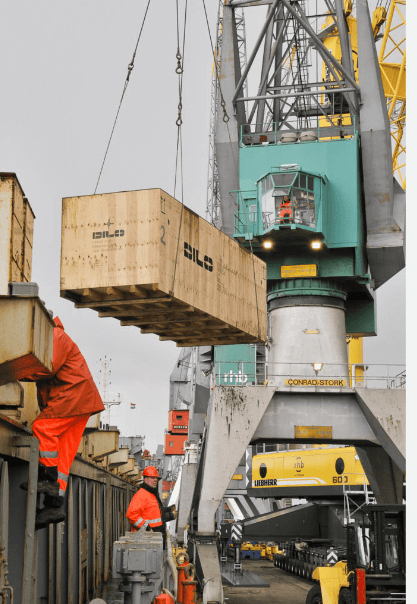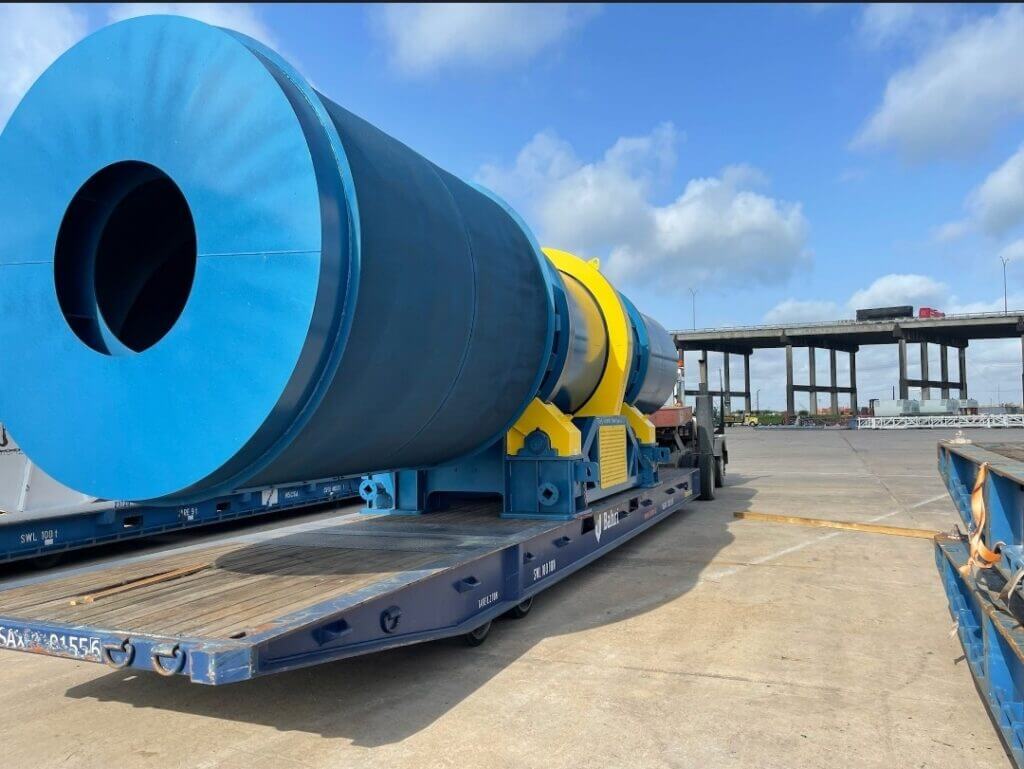Several transportation methods are employed within the logistics industry to move cargo globally. One of the standard methods used these days is breakbulk cargo shipping. The steady rise in international trade has triggered the prevalence of break bulk shipping, yet, it continues to get mixed up with other similar forms of cargo shipments.
Therefore, we provide an in-depth guide on break bulk cargo shipping, the processes involved, the packaging used, and its advantages and disadvantages.

What Is Break Bulk Cargo?
Break bulk, sometimes called general cargo, is loaded in individual units on an available cargo ship. The breakbulk shipping method successfully transports cargo and goods that cannot fit into standard-size shipping containers or cargo bins. Instead, the load is moved within several handling equipment or placed onto the ship.
Primarily, a cargo meets the “break bulk” criteria when it’s too bulky to fit inside a container. This might be because of its irregular shape, size, length, height, and other factors that make it unsuitable for regular containerized shipping.
Some examples of common breakbulk goods include reels and rolls, structural steel, construction, and manufacturing equipment, vehicles, and yacht, to mention a few. Shippers handle these goods carefully to foster a more convenient loading and unloading. The breakbulk shipping method works perfectly in smaller ports and for offloading goods to smaller vessels.
Break Bulk vs. Bulk Cargo
Historically, bulk and breakbulk cargo have been used interchangeably in logistics and business operations; however, they feature significant differences. First, bulk cargo refers to liquid, granular, or particulate material, which is usually dropped or poured into a bulk carrier ship’s hold. Other forms of transportation also exist for bulk cargo, from trains to trucks. Examples of these cargoes include crude oil, grain, coal, gravel, and other related materials.
On the other hand, shippers do not just drop break bulk cargo into the ship’s hold; they are stored in unitized forms like crates, drums, pallets, bags, and the like. Unlike bulk carriers, the ships carrying these items are break bulk vessels.
Packaging For Break Bulk Cargo

Packaging is a crucial aspect of breakbulk cargo shipping, and it’s the shipper’s responsibility to recognize the best form to package the goods before shipment. Deciding on appropriate packaging depends on the cargo’s nature and volume. Here are some of the most common breakbulk cargo packaging;
Bagging
As the name suggests, this packaging employs bags or sacks to encase cargo capable of withstanding external pressure throughout the shipment. Examples of bagged cargo include obvious entries from sugar to grains, seeds, dried milk, coffee, cement, salt, fertilizers, and flour, to mention a few.
The bags are made of paper, polypropylene, plastic, or fiber. The material used should be compatible with the cargo and protect it against contamination. That said, bags are very fragile and require careful handling to avoid damage. Their size also means goods packed in bags are prone to theft and loss; hence, the shippers are responsible for mitigating these risks.
Boxes and Cartons
Boxes and cartons represent the most economical packaging option for breakbulk cargo. Along with their cost effectiveness, they are also efficient enough to endure various transportation hazards.
Most shippers improve protection by employing pallets and stowing the whole box to prevent damage and theft. This method is most useful when the cargo passes through several docks and vessels before reaching its final destination.
Wood Cases and Crates
Wooden boxes have been one of the most dependable packaging options for a long time, with their ability to offer excellent protection due to their rigid surface. They feature strong walls that shield cargo from external factors.
On the flip side, crates are open-type wooden containers made in a skeleton-like design. While they may not feature strong shielding walls, crates are ideal for goods that require minimal packaging, such as large machinery and equipment.
Drums and Barrels
These options are perfect for liquid freight packaging, from oils to chemicals, latex, drinks, and other similar contents. However, they are also employed in moving powdered and granular goods. The possibility of chemical goods stored in drums and barrels makes proper labeling extremely important.
In handling drums, professionals use ropes, trays, slings, nets, and mechanical equipment for loading and unloading. They also pay attention to the area with the least strength against external pressure – the bilge – and ensure it does not support any weight.
Shrinkwrapping
This method is usually confused with stretch wrapping, which involves using plastic wrap to wrap palletized goods and keep the bundle together. Shrinkwrapping, on the other hand, employs heat to make the plastic wrap appear tight and rigid.
Shrinkwrapping creates an airtight seal, ensuring the cargo is isolated from substances that might cause contamination. Shippers use heat guns to shrinkwrap small-sized cargo; however, shrinkwrap machines work best for larger items.
While these are the common forms of breakbulk cargo packaging, shippers can also introduce other packaging options for different types of cargo. For instance, lift vans help transport basic household possessions, and vacuum seal help to isolate humidity and prevent corrosion. Other unique packaging options are used for special cargo, such as jewelry.
Benefits And Disadvantages Of Break Bulk Shipping

Breakbulk shipping has several advantages that make it highly regarded across the logistics industry. Some of these benefits include the following;
- Breakbulk shipping offers the ability to ship heavy and bulky cargo that surpasses container capacity conveniently.
- Breakbulk shipping allows the delivery of goods in various ports without engaging in large-scale deconsolidation or reconsolidation.
- Breakbulk shipping eliminates the need to ship cargo in different containers.
However, as with most things, shippers must contend with some disadvantages associated with breakbulk shipping. For one, it is much more labor-intensive, costly, and time-consuming than other shipping methods. Goods shipped through this method are more prone to damage and theft. Finally, while shippers transport some food items with breakbulk shipping, there are better options for this type of cargo.
Engage Total Connection To Assist In Break Bulk Cargo Shipping
The greatest challenge of transporting cargo through break bulk shipping is sustaining impeccable coordination and planning. Planning goes into every aspect of break bulk shipping, and the success of a shipment depends on the plans employed for loading, unloading, warehousing, and freight forwarding services.
As such, Total Connection offers top-quality logistics services for your special cargo. Our experience and competency in logistics service enable us to provide several relevant services to your breakbulk shipping needs. We comprehensively understand the processes and challenges involved in such shipments and are here to assist you every step of the way.
Contact our professional freight forwarders at Total Connection to understand more about break bulk cargo and how we can help with your shipment.
